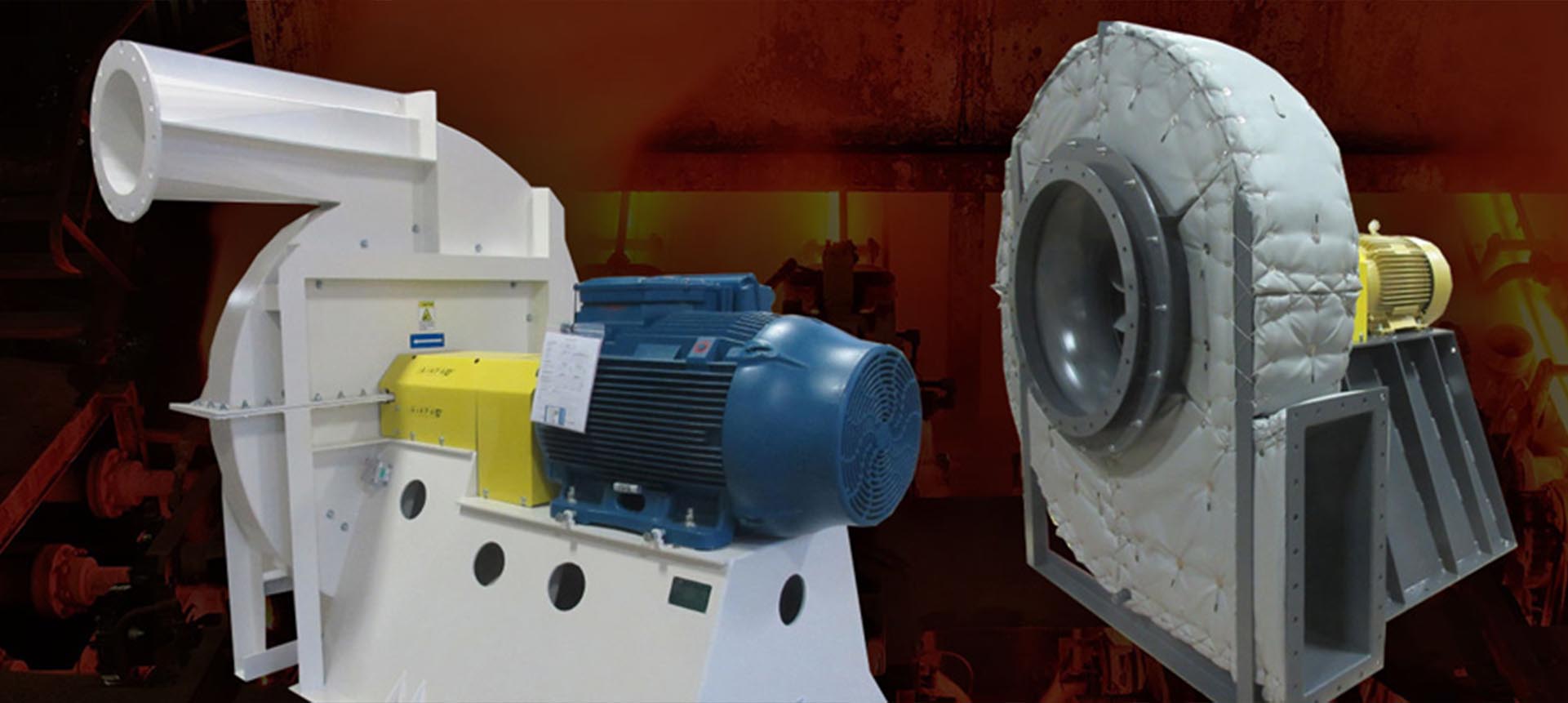Updated Application Page on High-Temperature Blower Fans
Air and heat are two essential components of industrial process manufacturing. Air serves as the conveyor, and heat is a transformer. In applications using high-temperature blower fans, both processes are happening together or in close proximity. That means the fans in these applications need to be able to take the heat, and in many cases, accompany corrosive gasses.
High-temperature operations like industrial furnaces, ovens, heat treating, and stress relieving circulate heated air within a chamber using convection. With temperatures that reach 1800 degrees Fahrenheit and beyond, these require specially designed high-temperature blower fans. If the fans are not properly designed specifically for this purpose, they will catastrophically fail when used at such extreme temperatures.
We determine the selection and specification of high-temperature blower fans based on required pressure and airflow, along with other nuances of your application. Designs that can handle high temperatures include the radial paddle wheel fan, forward curved fan, and some backward inclined models.
Design and Maintenance Considerations for High-Temperature Blower Fans
The special design features are mostly about protecting the fan, with variations based on the industry and function of the application. Here are a few key considerations:
Temperature Rise Rate
High temperatures may include rapid temperature changes, which may cause the fan wheel to move on the fan shaft if not designed properly. It is critical that you tell our engineers how many degrees per minute the temperature inside the fan airstream will move from ambient to operating temperatures. Your expected temperature rise rate will help us select the proper wheel material and treatment methods. It also impacts how the wheel will be mounted to the fan shaft.
Bearing Protection
The fan bearings are at risk of failure with high operating temperatures, as the hot air can escape the fan airstream and cook the bearings. It’s critical to use shaft seals to prevent air leakage from the housing and a cooling wheel may be used on the fan shaft to dissipate heat away from the bearings. Additionally, temperature sensors are always a good idea. They are installed on the fan bearings and will alert you if the bearings temperatures get too hot.
Insulation and Coating
We often recommend insulation for thermal protection in the system and environment surrounding the fan in a high-temperature application. It’s also common to apply an industrial coating on the external airstream. There are special considerations for high-temperature fan coating used in combination with insulation to accommodate the natural condensation that forms when the heat is trapped, which can have an effect similar to submersion in water.
More Details on High-Temp Applications
This post is just a preview – there is much more information about high-temperature blower fans on the High-Temperature Fan Applications page. Here are links to some of the other resources available:
- High-Temperature Fans
- Video: High-Temperature Fan Bearing Protection
- RTD Temperature Sensors Help Prevent Bearing
- High-Temperature Fan Coating
- High-temperature Purge Fan
- Heat Recovery Stem Generator
- Regenerative Thermal Oxidizer
- Oven Exhaust
We’ll be highlighting several more of our applications over the next couple of months. Keep your eye on the All Things Fans blog and sign up for our newsletter to stay up to date. For a connection with your local rep, request a quote or contact us.

